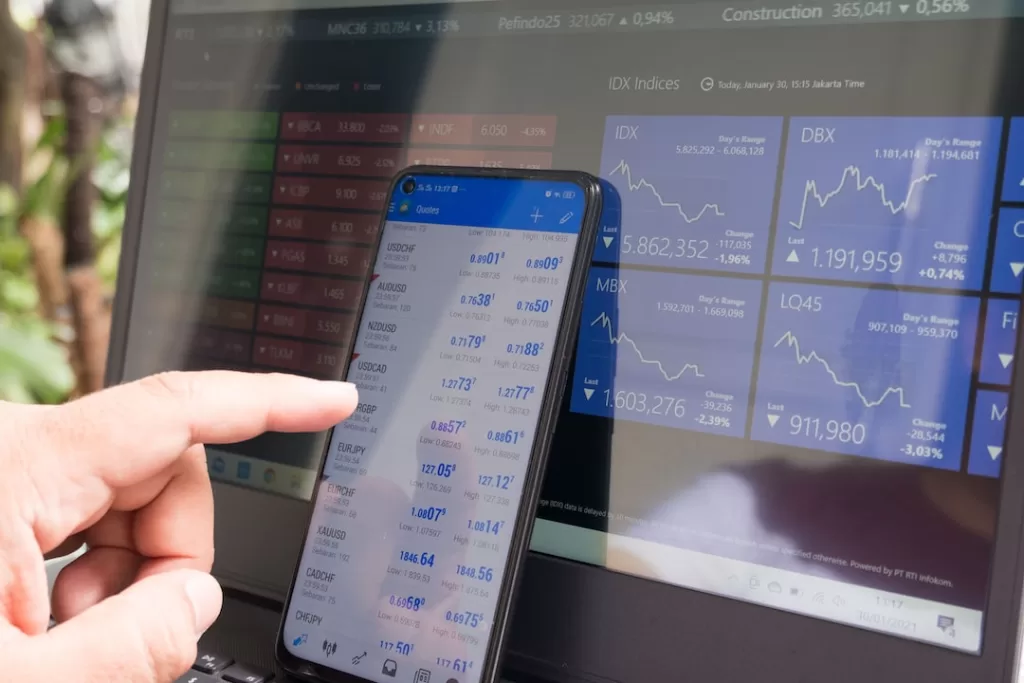Margin investing is a strategy that allows investors to borrow money from a brokerage firm to purchase securities such as stocks, bonds, or mutual funds. This borrowed money is known as “margin,” and it acts as a loan that the investor must repay with interest. Margin investing has been around for many years and has played a significant role in the stock market.
Disclaimer: This information is general in nature and for informational purposes only. It is not personal financial advice and has not taken into account your personal financial position or objectives. Make sure to refer to a licensed financial or tax advisor.
The concept of margin investing dates back to the early 20th century when the New York Stock Exchange (NYSE) introduced margin trading. This allowed investors to buy stocks on credit, using their existing holdings as collateral. Margin investing became popular during the 1920s, leading up to the stock market crash of 1929. The crash was partly attributed to excessive speculation and margin trading, which resulted in many investors losing everything.
Despite its association with the stock market crash, margin investing continues to be an important tool for investors. It allows them to leverage their investments and potentially earn higher returns. However, it is crucial for investors to understand the risks involved and manage them effectively.
Table of Contents
Understanding the Concept of Margin
Margin refers to the amount of money that an investor borrows from a brokerage firm to purchase securities. When an investor opens a margin account, they are essentially taking out a loan from the brokerage firm. The amount of margin available to an investor is determined by the value of their existing holdings and the brokerage firm’s margin requirements.
Margin works by allowing investors to amplify their potential returns. For example, if an investor has $10,000 in cash and wants to purchase $20,000 worth of stocks, they can use $10,000 of their own money and borrow $10,000 on margin. If the value of the stocks increases by 10%, the investor would make a profit of $2,000 ($20,000 x 10%). However, if the value of the stocks decreases by 10%, the investor would incur a loss of $2,000.
There are two types of margin accounts: cash accounts and margin accounts. Cash accounts require investors to have enough cash to cover the full cost of their purchases. On the other hand, margin accounts allow investors to borrow money from the brokerage firm to make their purchases. Margin accounts require investors to maintain a certain level of equity in their account, known as the margin requirement.
The Risks and Rewards of Margin Investing
Margin investing offers several advantages for investors. One of the main advantages is the ability to leverage investments and potentially earn higher returns. By borrowing money to invest, investors can increase their purchasing power and take advantage of market opportunities. Additionally, margin investing allows investors to diversify their portfolio and spread their risk across different securities.
However, margin investing also comes with significant risks. One of the main risks is the potential for losses. If the value of the securities purchased on margin declines, investors may be required to deposit additional funds into their account to meet the margin requirements. If they are unable to do so, the brokerage firm may sell their securities to cover the outstanding debt.
To manage the risks associated with margin investing, it is important for investors to have a clear understanding of their investment goals and risk tolerance. They should also have a solid understanding of the securities they are investing in and conduct thorough research before making any investment decisions. It is also advisable for investors to set stop-loss orders to limit potential losses and regularly monitor their margin account.
What is Dividend Investing?
Dividend investing is a strategy that focuses on investing in stocks that pay regular dividends to shareholders. Dividends are a portion of a company’s profits that are distributed to its shareholders as cash payments or additional shares of stock. Dividend investing has become popular among income-focused investors who are looking for a steady stream of income from their investments.
When an investor purchases dividend stocks, they become entitled to receive regular dividend payments. These payments can be reinvested to purchase additional shares of stock or taken as cash. Dividend investing can provide investors with a consistent income stream, especially in times of market volatility when stock prices may be fluctuating.
There are different types of dividend stocks that investors can choose from. Some companies pay regular dividends, while others may pay special dividends or increase their dividends over time. Dividend stocks can also be classified into different categories based on their dividend yield, which is the annual dividend payment divided by the stock price.
The Pros and Cons of Dividend Investing
Dividend investing offers several advantages for investors. One of the main advantages is the potential for a steady stream of income. Dividend stocks can provide investors with regular cash payments, which can be particularly beneficial for retirees or those looking to supplement their income. Dividends can also act as a cushion during market downturns when stock prices may be declining.
Another advantage of dividend investing is the potential for long-term capital appreciation. Companies that pay regular dividends are often well-established and have a track record of generating consistent profits. By investing in these companies, investors can benefit from both the dividend payments and potential capital gains as the stock price increases over time.
However, there are also risks associated with dividend investing. One of the main risks is the potential for dividend cuts or suspensions. Companies may reduce or eliminate their dividend payments if they are facing financial difficulties or need to reinvest their profits back into the business. This can result in a loss of income for investors and a decline in the value of their investment.
To manage the risks associated with dividend investing, it is important for investors to diversify their portfolio and invest in a mix of different dividend stocks. This can help spread the risk and reduce the impact of any individual company’s dividend cut or suspension. It is also important for investors to conduct thorough research and analysis before investing in dividend stocks to ensure that the company has a sustainable dividend policy.
Combining Dividend Investing with Margin

Combining dividend investing with margin can be a powerful strategy for investors looking to enhance their returns. By using margin, investors can increase their purchasing power and potentially earn higher dividends. This strategy involves borrowing money from a brokerage firm to invest in dividend stocks, with the expectation that the dividend payments will cover the interest expense and generate additional income.
To combine dividend investing with margin, investors need to open a margin account with a brokerage firm that offers margin trading. They can then use the margin to purchase dividend stocks and receive regular dividend payments. The dividend payments can be used to cover the interest expense on the margin loan and potentially generate additional income.
One of the benefits of combining dividend investing with margin is the potential for higher returns. By using margin, investors can increase their investment size and potentially earn higher dividends. This can be particularly beneficial for income-focused investors who are looking to maximize their income stream.
Advantages of Using Margin for Dividend Investing
Using margin for dividend investing offers several advantages for investors. One of the main advantages is the ability to increase investment size and potentially earn higher dividends. By using margin, investors can leverage their investments and increase their purchasing power. This allows them to invest in more dividend stocks and potentially earn higher dividends.
Another advantage of using margin for dividend investing is the potential for capital appreciation. By using margin, investors can increase their exposure to dividend stocks and benefit from any increase in the stock price. This can result in capital gains in addition to the regular dividend payments.
Using margin for dividend investing also allows investors to diversify their portfolio and spread their risk across different securities. By using margin, investors can invest in a mix of different dividend stocks, which can help reduce the impact of any individual company’s dividend cut or suspension.
Potential Risks of Dividend Investing on Margin
While using margin for dividend investing can be beneficial, it also comes with potential risks. One of the main risks is the potential for losses. If the value of the dividend stocks purchased on margin declines, investors may be required to deposit additional funds into their account to meet the margin requirements. If they are unable to do so, the brokerage firm may sell their securities to cover the outstanding debt.
Another risk of dividend investing on margin is the potential for dividend cuts or suspensions. If a company reduces or eliminates its dividend payments, investors may not have enough income to cover the interest expense on the margin loan. This can result in a loss of income and potentially lead to financial difficulties.
To manage the risks of dividend investing on margin, it is important for investors to have a clear understanding of their investment goals and risk tolerance. They should also conduct thorough research and analysis before investing in dividend stocks to ensure that the company has a sustainable dividend policy. It is also advisable for investors to set stop-loss orders to limit potential losses and regularly monitor their margin account.
Strategies for Successful Dividend Investing on Margin
To successfully combine dividend investing with margin, investors need to implement certain strategies. One strategy is to choose the right dividend stocks for margin investing. Investors should look for companies that have a track record of paying regular dividends and have a sustainable dividend policy. They should also consider the company’s financial health and ability to generate consistent profits.
Another strategy is to manage margin and dividend payments effectively. Investors should carefully monitor their margin account and ensure that they have enough cash flow to cover the interest expense on the margin loan. They should also reinvest their dividend payments back into their portfolio or use them to pay down the margin loan.
Diversification is another important strategy for successful dividend investing on margin. By diversifying their portfolio, investors can spread their risk across different securities and reduce the impact of any individual company’s dividend cut or suspension. They should invest in a mix of different dividend stocks from different sectors and industries.
Is Dividend Investing on Margin Right for You?
Deciding whether dividend investing on margin is right for you depends on several factors. It is important to consider your investment goals, risk tolerance, and financial situation before making any investment decisions. If you are looking for a steady stream of income and have the ability to manage the risks associated with margin investing, dividend investing on margin can be a viable strategy.
However, it is crucial to conduct thorough research and analysis before investing in dividend stocks on margin. You should choose companies with a track record of paying regular dividends and have a sustainable dividend policy. It is also important to monitor your margin account regularly and ensure that you have enough cash flow to cover the interest expense on the margin loan.
In conclusion, margin investing and dividend investing are both powerful strategies that can enhance your investment returns. By combining these two strategies, investors can potentially earn higher dividends and benefit from capital appreciation. However, it is important to manage the risks associated with margin investing and conduct thorough research before making any investment decisions.
If you’re interested in exploring passive income through dividend investing, you may also want to check out this article on “Passive Income Using Dividend Stocks” from Passive Income Solutions. It provides valuable insights and strategies for generating passive income through dividend stocks. Whether you’re a beginner or an experienced investor, this article offers practical tips and advice to help you make informed decisions and maximize your returns. Read more
FAQs
What is dividend investing on margin?
Dividend investing on margin is a strategy where an investor borrows money from a broker to purchase dividend-paying stocks. The investor then uses the dividends received from the stocks to pay back the loan and keep the remaining profits.
What are the benefits of dividend investing on margin?
The benefits of dividend investing on margin include the potential for higher returns, increased diversification, and the ability to leverage existing investments.
What are the risks of dividend investing on margin?
The risks of dividend investing on margin include the potential for higher losses, increased volatility, and the possibility of a margin call if the value of the investments decreases.
What is a margin call?
A margin call is a demand from a broker for an investor to deposit additional funds or securities to meet the minimum margin requirements. This can occur if the value of the investments purchased on margin decreases and the investor’s equity falls below a certain level.
What are the margin requirements for dividend investing?
The margin requirements for dividend investing vary depending on the broker and the specific investments being purchased. Generally, brokers require a minimum equity level of 25% to 50% of the total investment value.
Is dividend investing on margin suitable for all investors?
No, dividend investing on margin is not suitable for all investors. It is a high-risk strategy that requires a significant amount of knowledge and experience. Investors should carefully consider their financial situation and risk tolerance before engaging in dividend investing on margin.







